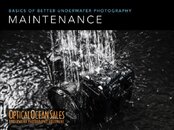scagrotto
Contributor
I use a paper towel to wipe of excess silicone. The o-ring should be shiny from the grease, but you shouldn't really be able to see obvious grease. As Akimbo's post noted, the primary reason for the silicone grease is to allow the o-ring to move without excessive deformation.
One thing that hasn't been directly mentioned is salt crystals. Once a clean housing is exposed to salt water it should be kept wet until it has been thoroughly soaked in clean, fresh water. Note that simply rinsing the housing is not the same as soaking. Rinsing can remove loose particles, but soaking is required to *dissolve* any salt that has been deposited.
One thing that hasn't been directly mentioned is salt crystals. Once a clean housing is exposed to salt water it should be kept wet until it has been thoroughly soaked in clean, fresh water. Note that simply rinsing the housing is not the same as soaking. Rinsing can remove loose particles, but soaking is required to *dissolve* any salt that has been deposited.





